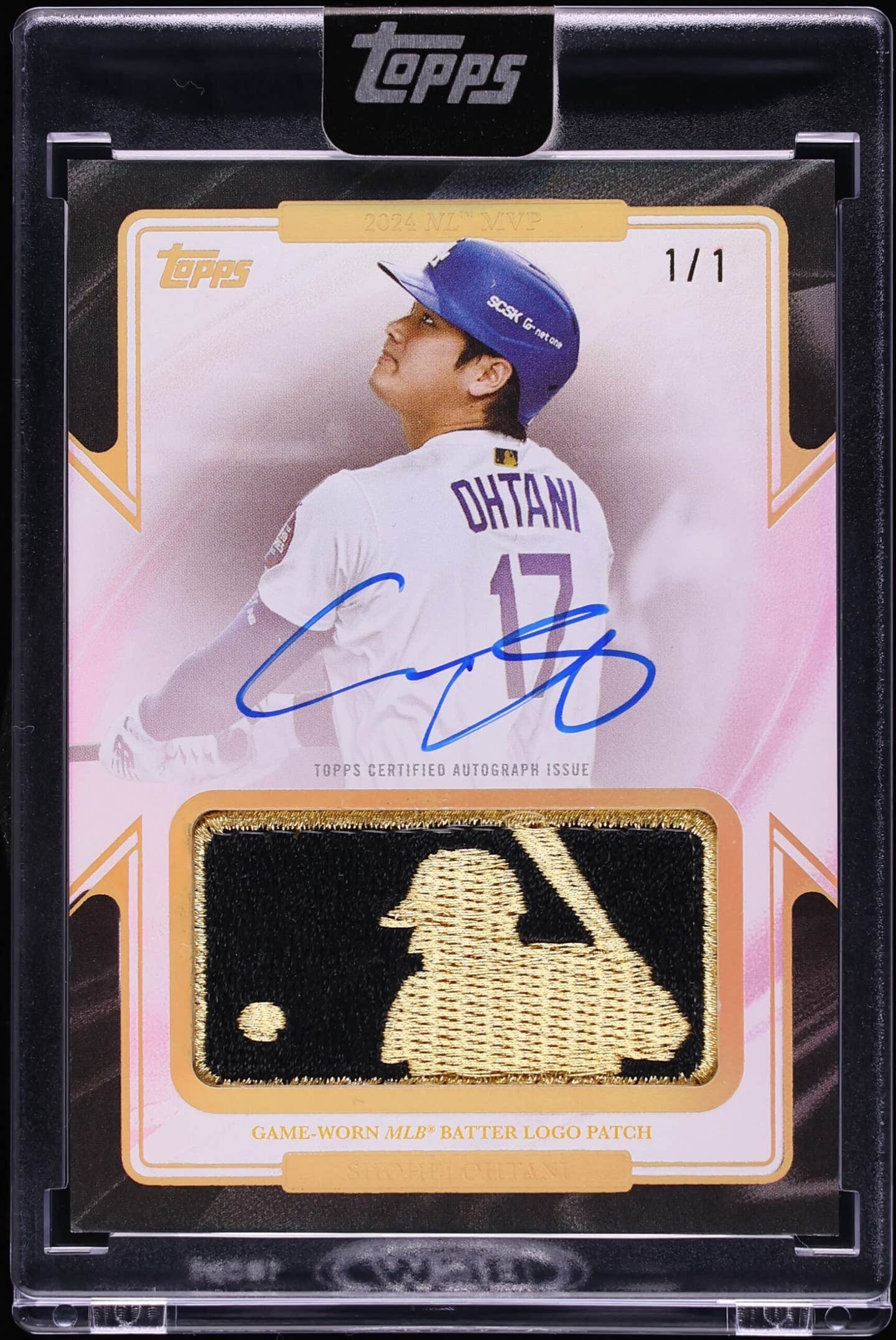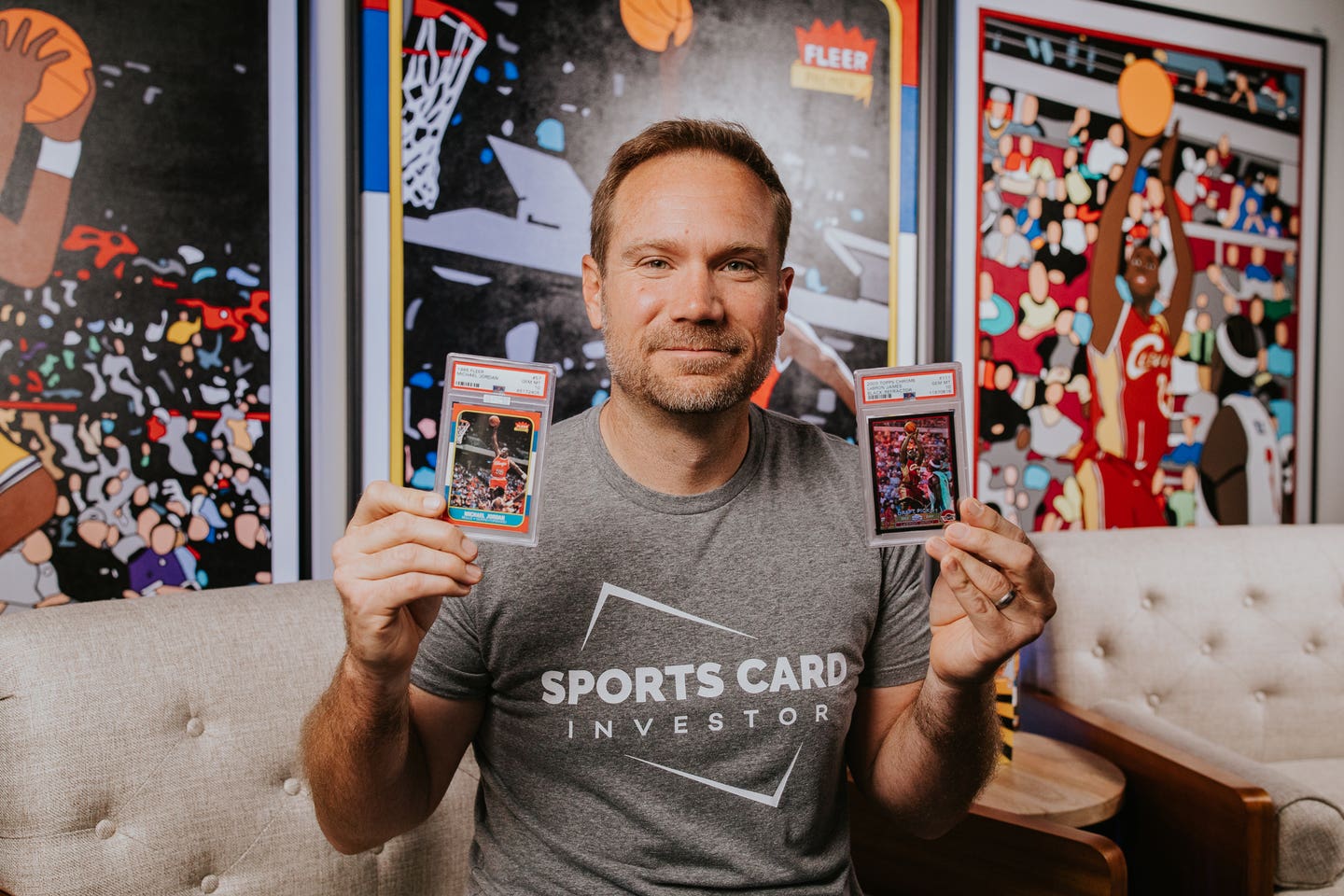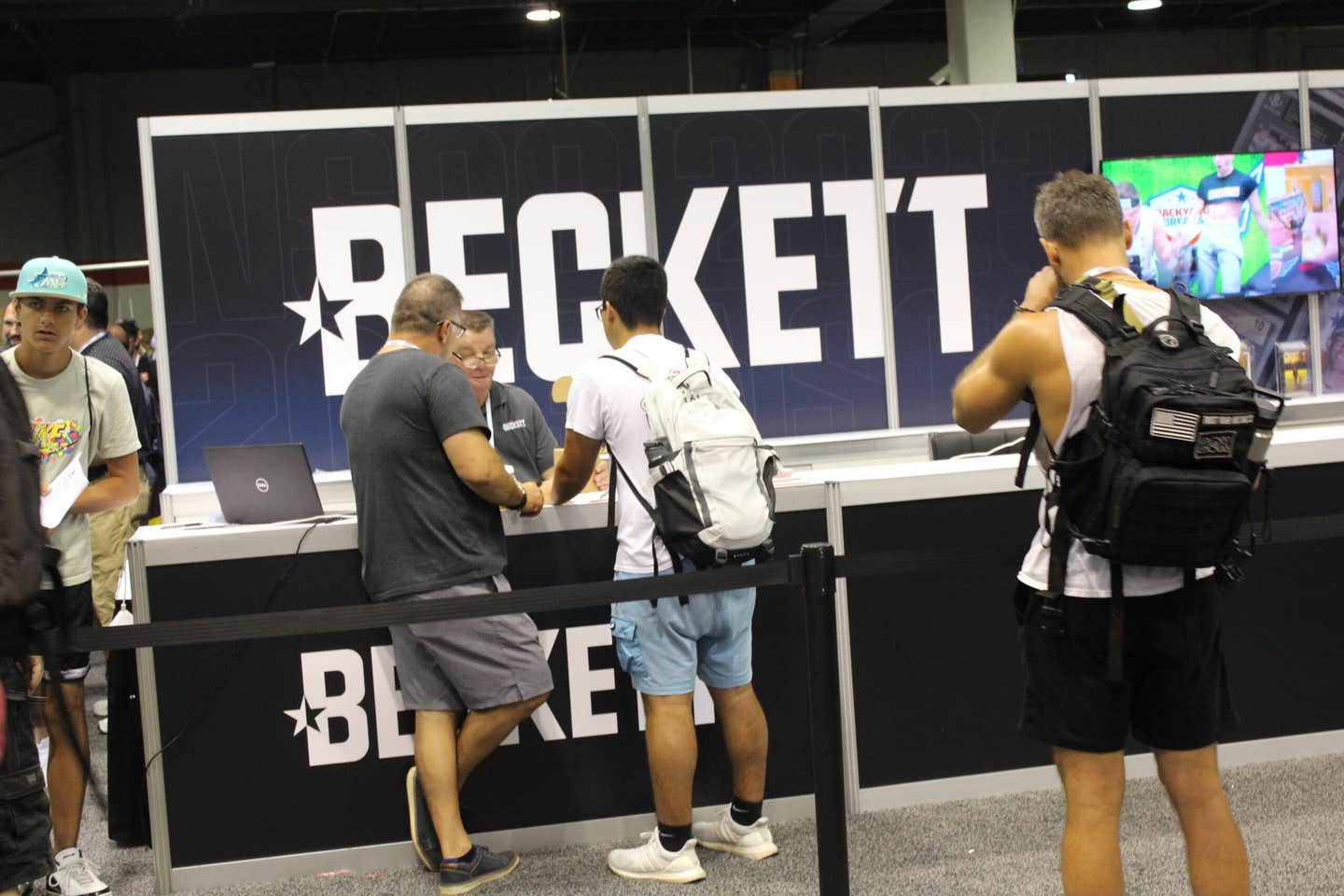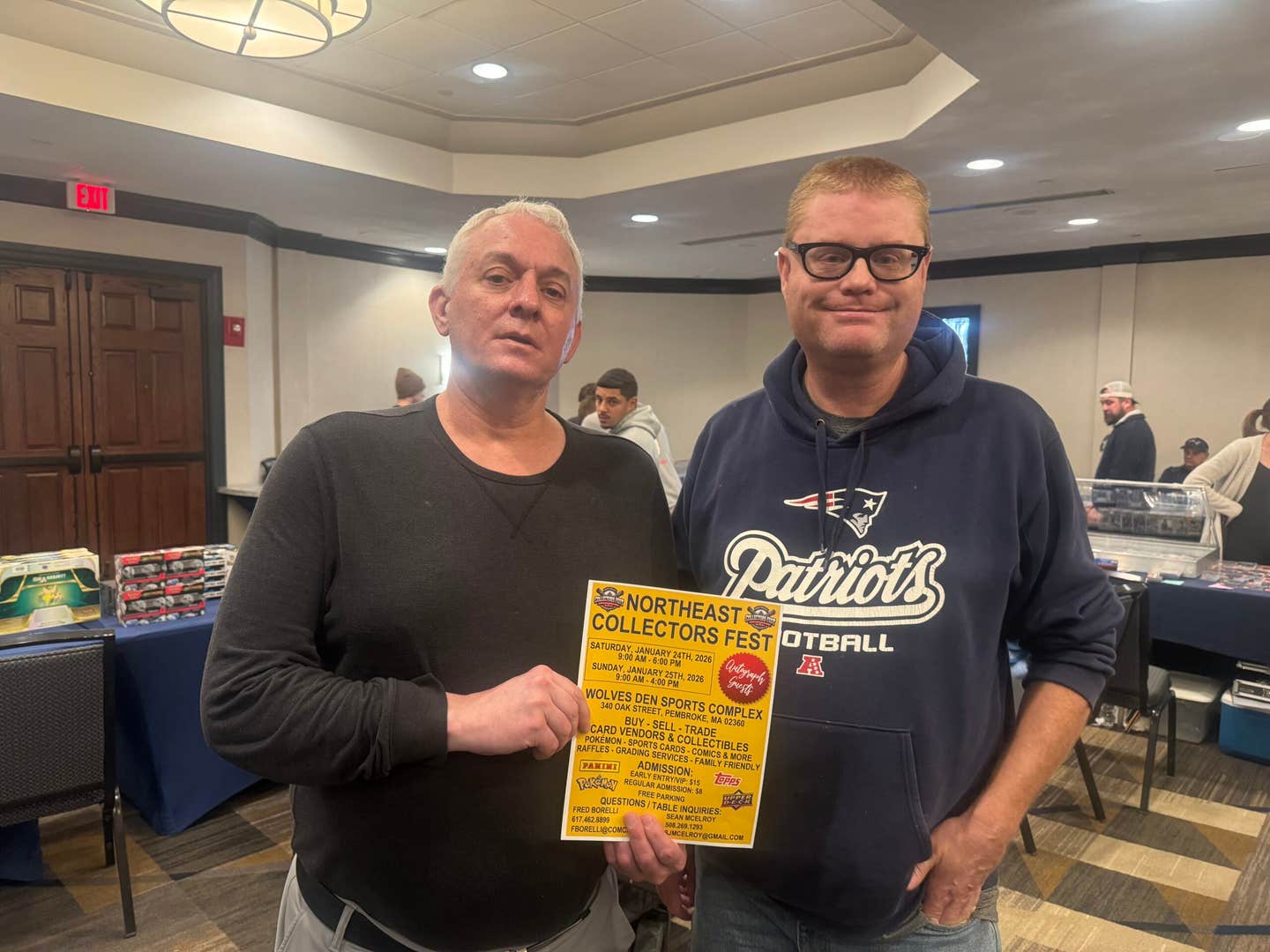News
Joe Orlando’s take on half grades – Q & A
Unless you’re a collector who’s been out of the country recently or hiding in a box for the past month, you’re probably quite aware of Professional Sports Authenticator’s (PSA) recent announcement to add half grades to the company’s card-grading criteria.
You would also have to be quite out of it if you weren’t aware of the chatter among PSA Set Registry members and Internet message board participants.
I will admit, I was one of the skeptics when I first heard of PSA’s big change, but after an exclusive interview I conducted with Joe Orlando, president of PSA, it started to make better sense as to why the company, which until now has chosen to only use whole number grades, changed its grading structure.
The interview
The following is a question-and-answer session Orlando and I recently had about the half-grade announcement.
Sports Collectors Digest: What have been your observations of the overall reaction to PSA’s announcement of the half grade?
Joe Orlando: Most of the people who I’ve talked to in person or through e-mail have been overwhelmingly in favor of it.
Some of the people who I’ve watched through posts on various message boards are seemingly reacting emotionally. But it seems like even the people who are lukewarm to the idea at first, when I talk them through it and explain how it works or how it might benefit their collections, I’ve yet to have a person walk away from me at that point and tell me they don’t like the idea.
I think it’s human nature that people don’t like change, and this is obviously a major change after doing it a particular way for so many years.
SCD: If somebody resubmits a card to you, it can either stay the same or go up a half point. What are you telling people who don’t understand why, for instance, a card that is now a 7 can’t drop to a 6.5.
Orlando: The way we look at grading, we don’t sit there and say, “This is a 6.7 or a 6.8.” If a card that we graded, say, two years ago, if it reached the “7” grade then it’s a 7. So, we never rounded up.
I’m glad you asked the question. That’s why we say, “Hey, this gives us an opportunity and the collector an opportunity to find out if it is in essence a 7.7, and again on our scale, it would get the half point.”
SCD: Was your decision to add half grades based on your competitors always using half grades or was it a reaction to what collectors and PSA Set Registry members wanted?
Orlando: It was more of a combination of the latter. It wasn’t so much of what our competitors were doing.
If that were the case, we would have done this a long time ago. It’s not like we were looking to follow somebody else’s lead. It’s that we were looking at our own marketplace and looking at our customer base by thinking that this is the best decision for PSA customers, long term.
You can cite so many examples of this, but we use the example of a Sandy Koufax rookie, which in an “8” is worth around $2,000-$2,500. In a “9,” the last two have sold in excess of $20,000. There has to be something in between those two numbers. The gap is too great, and it discourages people who want to upgrade their set. That is such an enormous jump for anyone who wants to collect a high-grade set. Ten times the value of the prior grade?
If someone wants to step up to that level, that’s great because those items are extremely scarce, but this at least gives a person the opportunity to still upgrade their collection but also provide something that is in between those two numbers.
SCD: What will happen to the PSA Population Report? Will it adjust for people resubmitting cards?
Orlando: The beauty of the system is that the serial numbers are not going to change, so if you submit a PSA 8 Sandy Koufax rookie and it goes from an 8 to an 8.5, it will automatically change in our database.
SCD: What are you telling people that think PSA is doing this half-grade change only to increase revenue through resubmissions?
Orlando: First of all, it would be ridiculous and dishonest for me to sit here and tell you that I don’t think this will generate more revenue for PSA. Of course it will. We are in business, and I think it is a good business decision.
However, I say that, but we’ve been asked about half-point grading for years and every year we tell them that we aren’t sure if we want to do it.
We do think it is the best long-term decision, not just for PSA, but for our entire market.
I also believe that, while PSA will benefit from resubmissions, dealers will also make money off of this concept. But I really feel that the people who stand the most to gain from this service are collectors because they’re sitting on all the potential upgrades, and when you look at the cost of resubmitting cards and the potential value increase, it’s a no-brainer.
It will take a while for the market to settle, but for the resubmission fee on a high-dollar vintage card, if you get a half-point upgrade, it could be worth a heck of a lot more.
There may be cases where you can maybe double or triple the value of your card for a resubmission fee.
SCD: Using your example that a collector could potentially increase the value of their cards by resubmitting them, and assuming an 8 being bumped up to an 8.5 will increase its value, do you think that the 8s, for instance, will go down in value?
Orlando: I know what you mean, and that’s a good question. I’ve probably answered it over 1,000 times in the last week.
I don’t believe that will be the case for many vintage issues, however, the reality is on more modern issues there is a chance that over time the 8s may soften.
It’s all about the relative scarcity. So, for example, if you’re talking about a difficult issue like 1953 Topps, I have looked at lots and lots of NM-MINT ’53 Topps cards, as our graders and many dealers and hobbyists have. Getting something from like an 8 to an 8.5 on a 1953 Topps card is going to be fairly difficult, so out of every 10 Mickey Mantle cards that we have graded, my guess is at very best only one or two of them would make it to an 8.5.
So, in that case, since the 8.5s are going to be relatively scarce in comparison to the 8s, I don’t believe that the 8s will suffer at all.
However, let’s talk about 1972 Topps baseball, because there is plenty of high-grade material out there. And in that case, it is possible that a much higher percentage of 8s will become 8.5s.
As you go from the ’70s to the present, with the exception of something like ’71 Topps, I think you will find that the easier the 8.5 is relative to the issue, the more affect it may have to the lower whole grade.
It is really depends on the issue. It’s sort of a case-by-case basis, but generally speaking, I think once you go into more vintage material, I don’t think that will be the case at all.
Another element to it is this – it has always been the approach or strategy of the high-end vintage collector to say that, “I want to build a 1955 Topps set in 8 or better.” I don’t think that all of a sudden they’re going to change that approach and say, “No, now all I want are 8.5s or better.
Check out Chris Nerat’s blog, Gavel Chat at: gavelchat.sportscollectorsdigest.com. Readers may reach him at Chris.Nerat@fwpubs.com or call him at (800) 726-9966 ext. 452.








